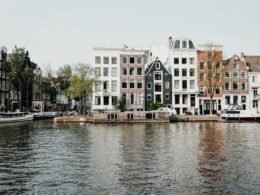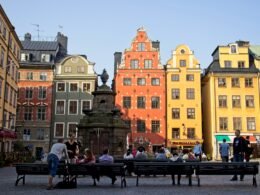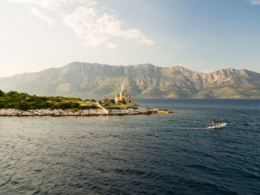Portugal is a small, but incredibly diverse country. If you’re looking to visit an affordable destination in Western Europe with beautiful beaches, historic cities, and excellent wine, Portugal is the place to go. We’ve put together a 2-week Portugal Itinerary to help you see the best of this underrated destination.
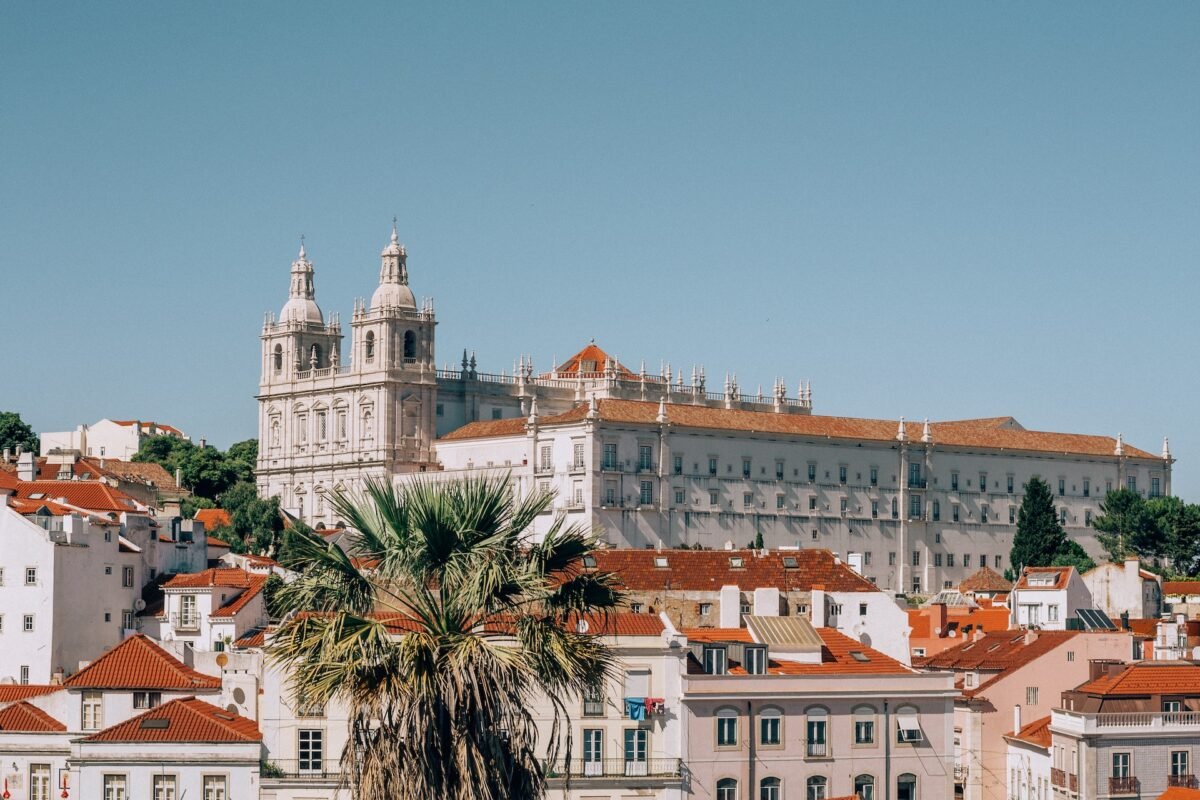
On this trip, you’ll enjoy the culinary scene in Porto, visit the first capital of Portugal, explore extravagant castles, and relax on golden sand beaches. Read on to plan your perfect adventure in this fascinating country on the Iberian Peninsula.
Table of Contents
- Day 1: Arrive & Explore Porto
- Day 2: Douro Valley
- Day 3: Explore Ribeira in Porto
- Day 4: Coimbra
- Day 5: Explore Baixa and Chiado in Lisbon
- Day 6: Bairro Alto in Lisbon
- Day 7: Alfama in Lisbon
- Day 8: Day trip to Sintra
- Day 9: Day trip to Obidos
- Day 10: Arrive and explore Lagos Old Town
- Day 11: Lagos Boat Tour
- Day 12: Lagos Beaches
- Day 13: Explore Faro
- Day 14: Explore the Ria Formosa and Depart
- Final Thoughts
Day 1: Arrive & Explore Porto

Arrive at the airport in Porto, and your adventure in Portugal is ready to begin. Porto, located on the banks of the Douro River, is a charming city with historic sites, a compelling food scene, and a beautiful mix of modern and medieval architecture.
What to do and see in Porto:
You can’t visit Porto without seeing Livaria Lello, a bookstore over 100 years old that’s one of the most beautiful bookstores in the world. Another must-visit is the Clérigos Tower. It’s Portugal’s tallest free-standing bell tower, and you’ll have beautiful views from the top once you finish the climb up. While you’re nearby, visit Clérigos Church as well.
What to eat:
Porto has a rich dining scene with a great mix of restaurants serving traditional local cuisine and those serving trendy international dishes. If you’re looking for a family-run spot try out A Cozinha do Manel. If you’re in the mood for a splurge, book a reservation for the 2-Michelin-starred Yeatman Restaurant at the most exclusive hotel in the city.
Where to stay:
$ – Hotel Dom Henrique
$$ – Hotel Internacional Porto
Day 2: Douro Valley

On your second day in Portugal, venture into the countryside around Porto to the Douro Valley for a day trip. This picturesque area full of green hills and small villages is the birthplace of Port wine. Check out sites like airbnb experiences, or Viator to book a day tour to get a taste of the Douro valley.
What to do and see in the Douro Valley:
To experience this scenic region, book a Duro Valley wine country tour in advance. Look for a tour that takes you to a winery to learn about the history and production of Porto wine. Tours will likely include a wine tasting as well. Some tours also include a boat cruise along the Douro River. If it’s within your budget, it’s a great addition to your day trip in the Douro Valley.
What to eat:
After a full day of exploring the Douro Valley, you’ll return to Porto for dinner. For an authentic Portuguese meal, try out the dishes at Cafeina, an elegant, upscale restaurant. Or head to Cafe Majestic, an ornate Belle Epoque-era cafe.
Day 3: Explore Ribeira in Porto
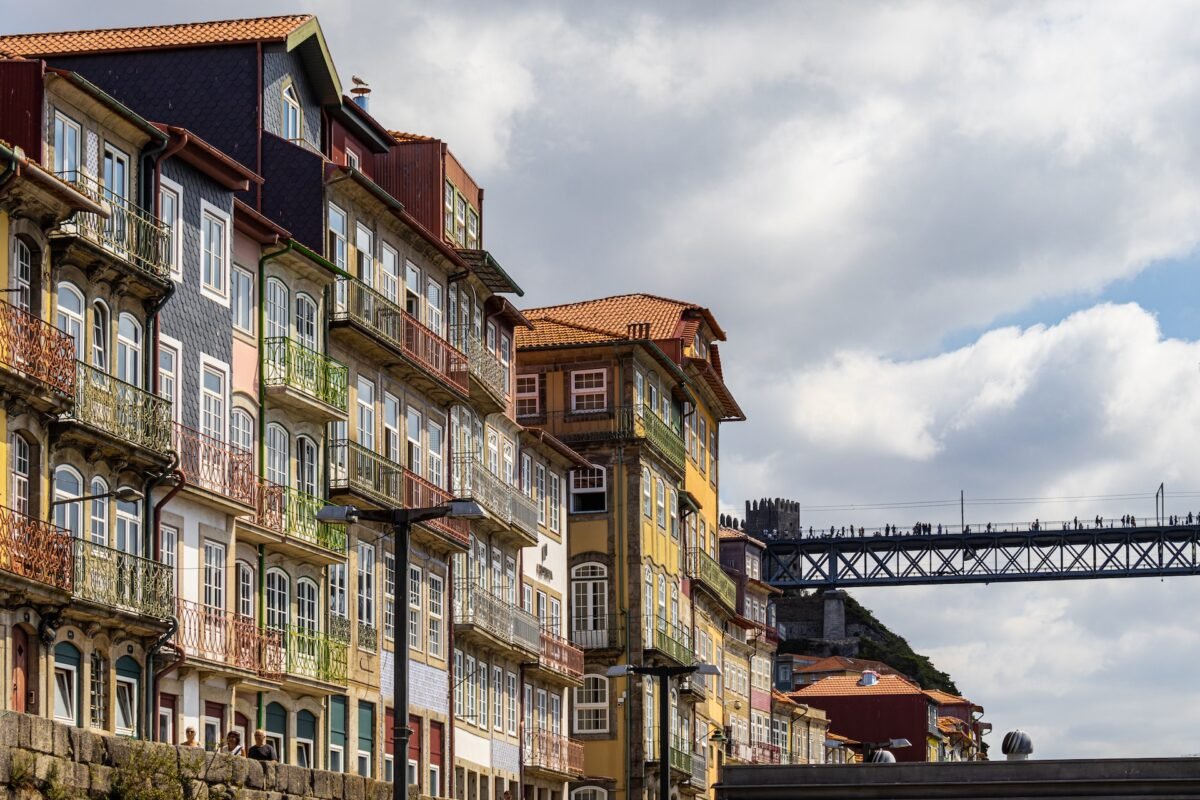
Before leaving Porto, there are a few more areas to explore in this beautiful city of stunning architecture and lovely cobblestone streets. Ribeira is one of the city’s most beautiful neighborhoods.
What to do and see in Ribeira:
Head to Cais da Ribeira, Porto’s riverside quarter with winding streets and colorful facades. As you stroll through this lively area, you’ll find all kinds of lovely small shops, cafes, and restaurants. To pick up a meaningful souvenir, go to Coisas de Cá to find jewelry, ceramics, and other art pieces created by regional artists. Nearby attractions include the Igreja dos Grilos, the Sé Cathedral, and the Casa do Infante.
What to eat in Ribeira:
Enjoy riverside views from floor-to-ceiling windows while eating at D. Tonho. For traditional Portuguese tapas, try out Jimão Tapas e Vinhos. If you’re interested in more wine after the previous day’s winery tour, head to the Wine Quay bar where you can enjoy the excellent wine list.
Day 4: Coimbra
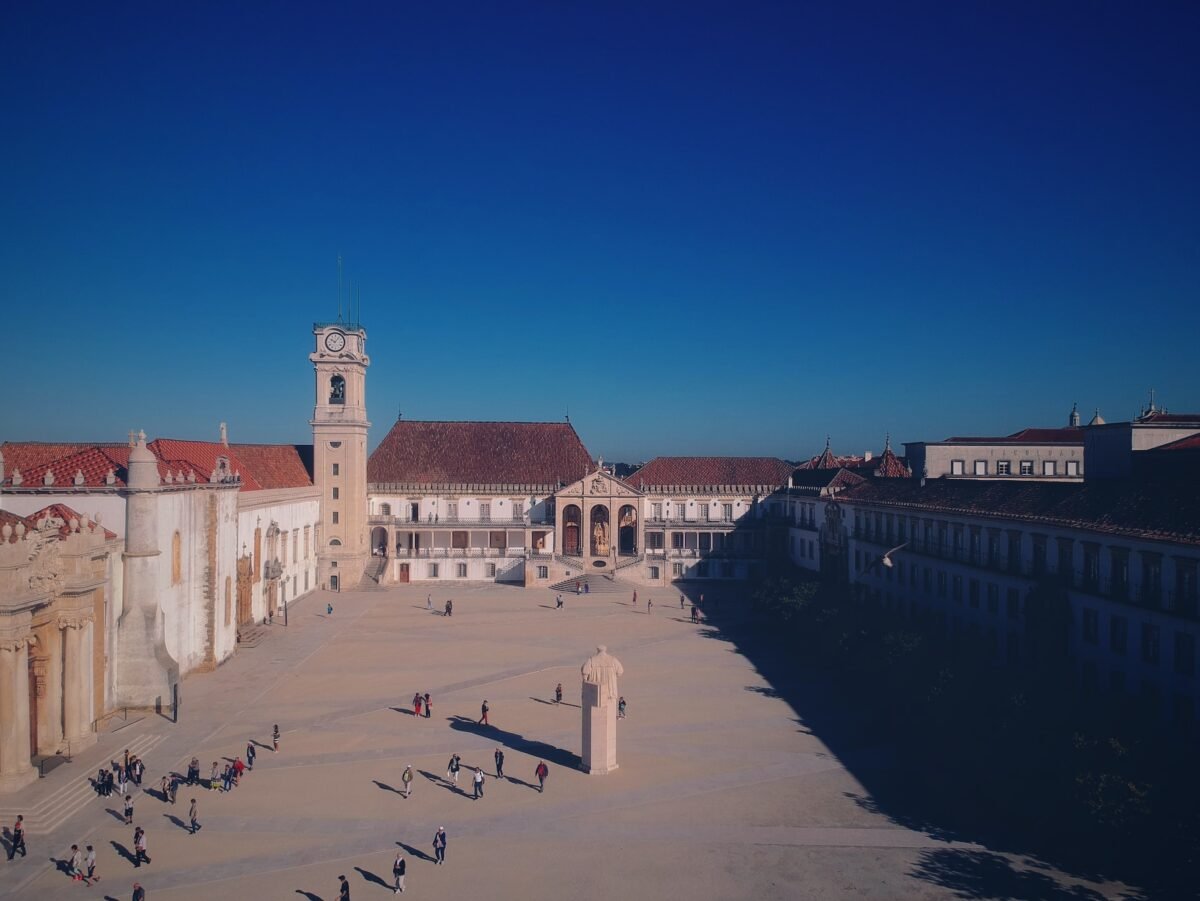
Travel time from Porto to Coimbra: 1 hour 10 minutes, by train
Halfway between Porto and Lisbon, Coimbra makes a perfect day trip from either city, but it’s an even better experience if you’re able to spend a night there. This city was the first capital of Portugal beginning in 1139 and is the site of one of the oldest universities in Europe.
What to do and see in Coimbra:
Make sure to wear comfortable shoes in Coimbra because you’ll be walking uphill and downhill over cobblestone streets as you explore the city’s attractions. Coimbra’s most famous attraction is the University founded in 1290. Most of the grounds are free to explore, but you need a ticket to see the Royal Palace, the Tower, St. Michael’s Chapel, and the Library. You’ll also want to visit the Coimbra Old Cathedral to admire the Romanesque architecture. The New Cathedral (built in 1598) is also worth the visit. If you have time, stop by the Botanical Gardens or stroll along the riverside at the Parque Manuel Braga.
What to eat:
Leitão Assado à Bairrada, a delicious salty dish made of pig, is popular in the area and worth finding in Coimbra. You’ll find multiple leitão restaurants while in the city. Another popular dish is Francesinha, a sandwich with meat, ham, eggs, and cheese that’s similar to a Croque monsieur. For dinner, try out Zé Manel dos Ossos for traditional Portuguese food.
Where to stay:
$$ – República Guest House
$$$ – Sapientia Boutique Hotel
Day 5: Explore Baixa and Chiado in Lisbon
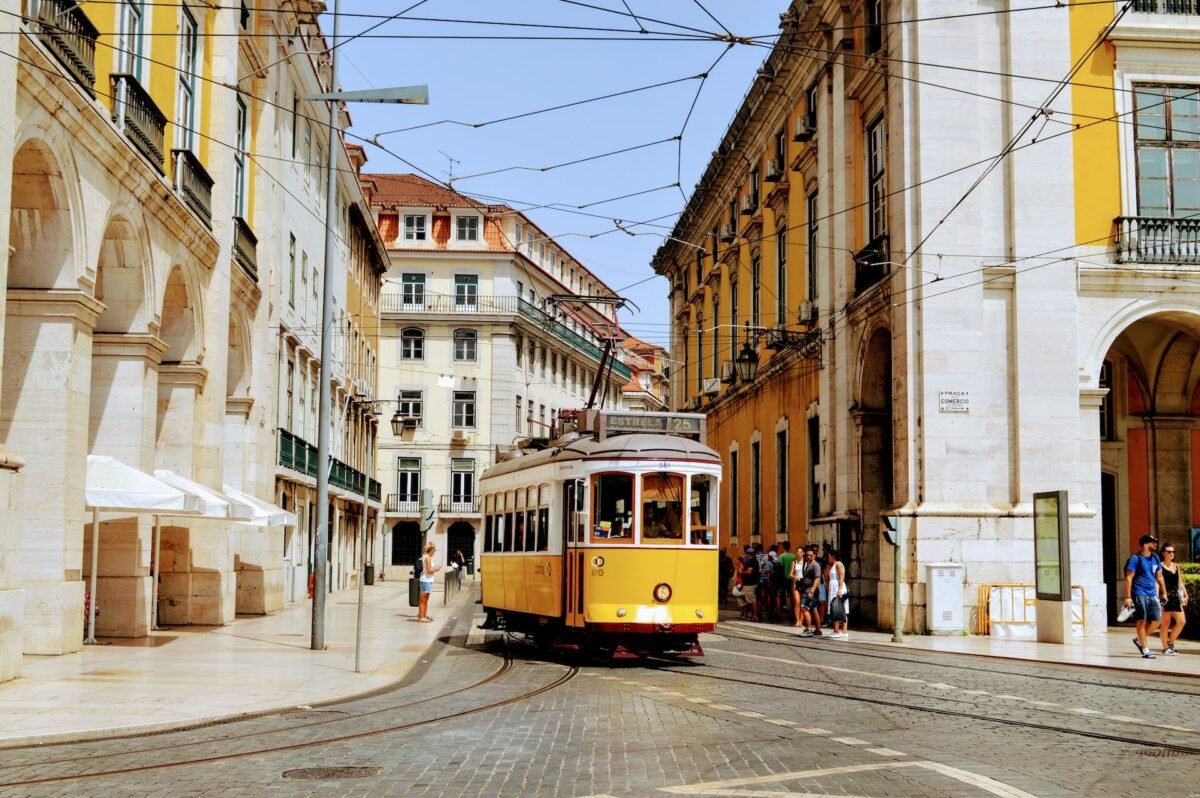
Travel time from Coimbra to Lisbon: 1 hour 45 minutes, by train
If spending your days on sunny rooftops, enjoying fresh seafood, and sampling local wines sounds appealing to you, then you’ll love Lisbon. It’s no surprise that Portugal’s capital city is rapidly becoming a favorite destination for many visitors.
What to do and see in Baixa and Chiado:
Spend your first day in Lisbon by exploring Baixa and Chiado, two of Lisbon’s most well-known neighborhoods. These districts are home to many of the city’s historic sites as well as its famous shopping street. On Rua Augusta, you’ll find many different boutiques and shops to browse. In the area, you can also visit Livraria Bertran, the oldest bookstore in the world. Other popular attractions are the Praça Luís de Camões, Praça do Comércio, and Convento do Carmo.
What to eat in Baixa And Chiado:
Try a variety of traditional and contemporary dishes at the classic tavern Taberna da Rua das Flores. There’s a wait during peak times, but it’s worth the time. Another great option in Baixa is Prado. The food is light, fresh, and absolutely delicious. For a relaxed, simple meal in Chaido, try Cafe Lisboa where you can enjoy the chef’s “nata” custard pie.
Where to stay:
$$$$ – Hotel da Baixa
$$ – Boutique Chiado Apartments & Suites
$ – Hotel Borges Chiado
Day 6: Bairro Alto in Lisbon
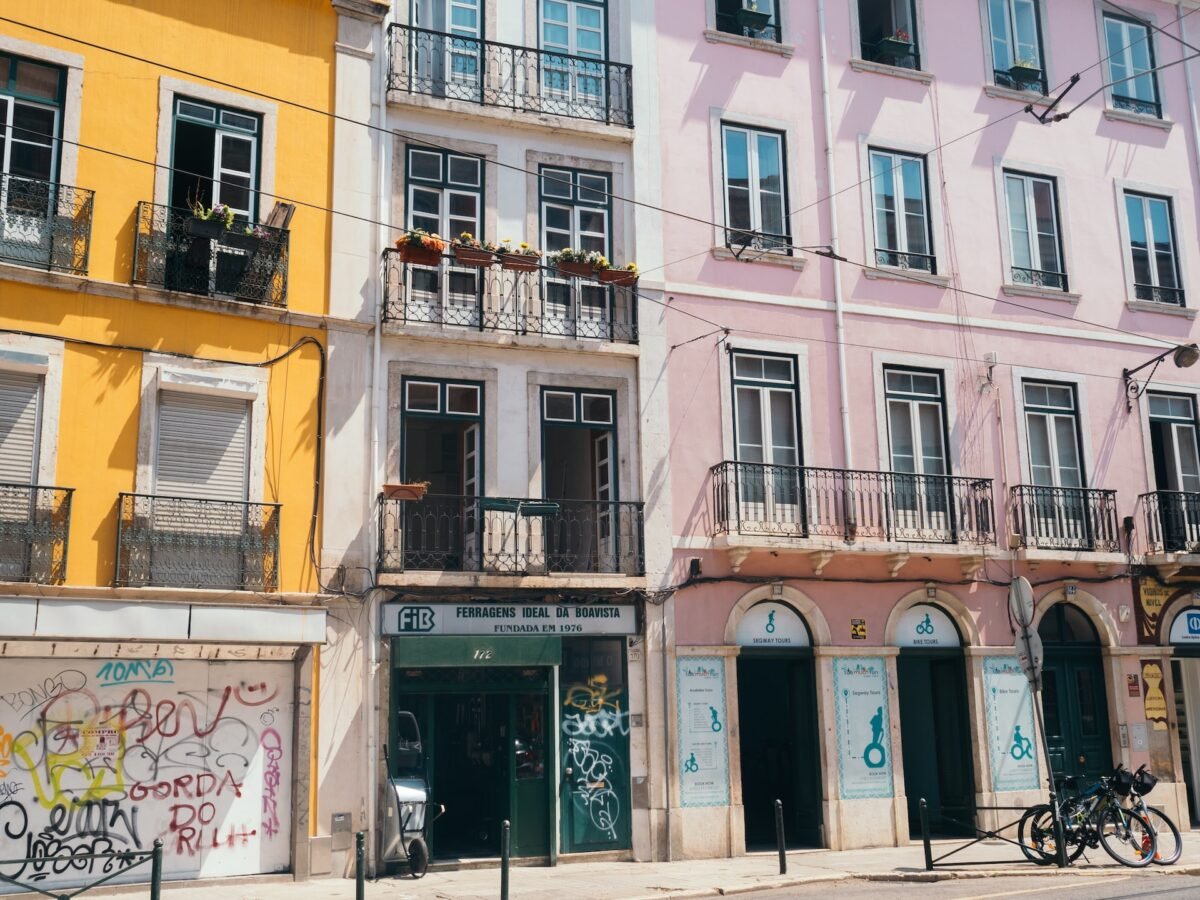
Lisbon’s “high town” is a quiet neighborhood during the day and a popular party zone during the evening. You’ll get to enjoy both sides of Bairro Alto during your trip.
What to do and see in Bairro Alto:
Spend time sightseeing during the day. Be sure to take the Elavador da Gloria funicular from the Restauradores metro station up to the Sao Pedros de Alcantara viewpoint. Popular attractions in the neighborhood include the São Roque church in Trinidad Coelhoe square and the Covent of Our Lady of Mount Carmel. You can also enjoy strolling through the cobblestone streets looking at the old houses and the vibrant street art.
During the evening, enjoy the area’s nightlife. Start off with a fancy cocktail at Park Bar overlooking the river. Then, head to Rua do Diário de Notícias to bar hop along the street filled with several of Lisbon’s iconic bars.
What to eat in Bairro Alto:
For a leisurely brunch, try out the Flower Power Cafe where you can enjoy deliciously fresh bagels and salads. Or try the Tease Bakery which is best known for its specialty cupcakes, but also has breakfast and brunch options. For more substantial meals, head to Tagide or Restaurante Flores de Bairro Alto.
Day 7: Alfama in Lisbon
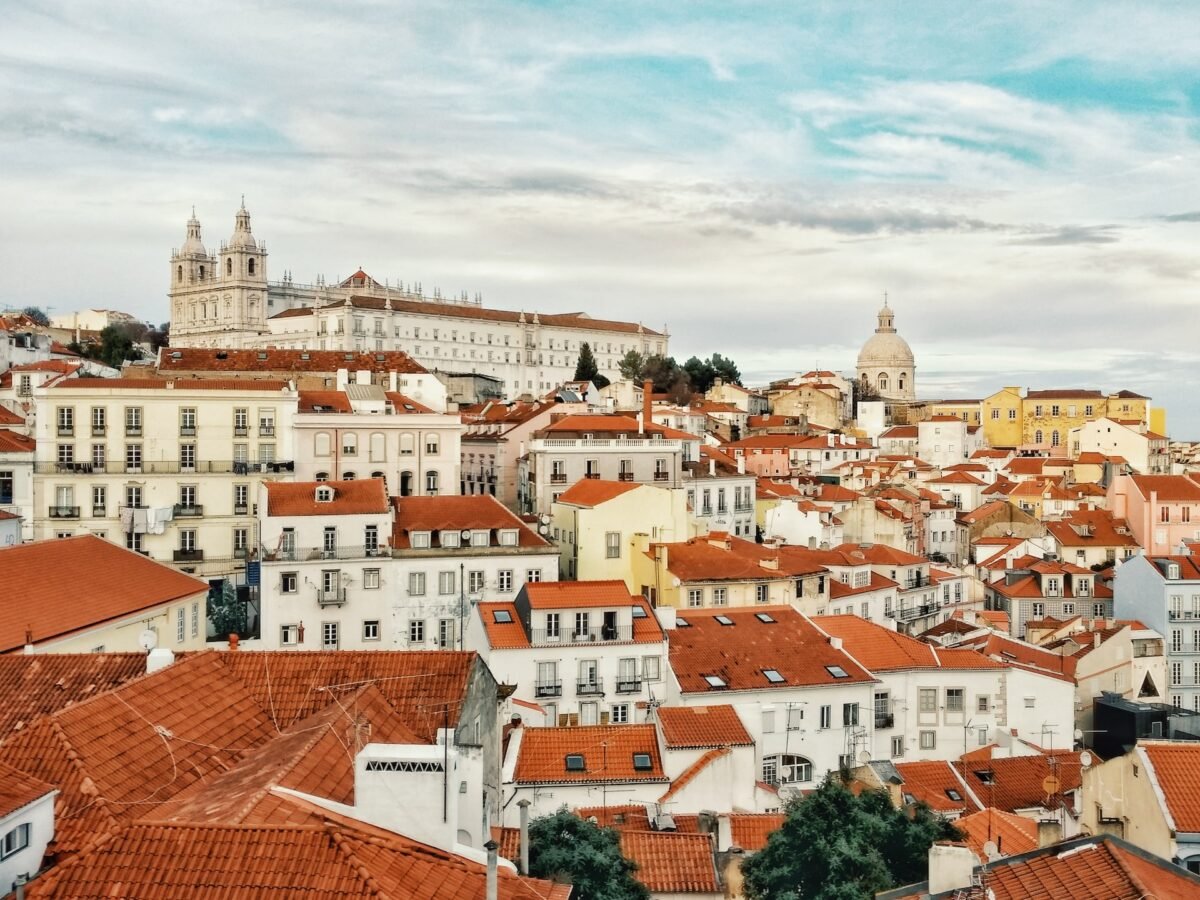
Alfama is an incredibly quaint and beautiful district in Lisbon. You’ll love spending the day wandering through the maze-like cobblestone streets of the oldest district in the city. The area is on a steep hill, so you’ll want to make sure you have on your most comfortable shoes as you explore this neighborhood.
What to do and see in Alfama:
Because the streets can take extra attention to navigate, taking a guided tour is a great way to see the highlights in Alfama. If you’d rather explore on your own, start out at Castelo Sao Jorge and work your way down through the neighborhood. As you explore, stop at the shops selling local items and the cafes lining the steep streets.
Be sure to visit the Igreja da Madalena, Sé Cathedral, and the Palacete Chafarix d’El Rei. Enjoy the street at the secret Lisbon tunnel near the stairs of Street Norberto Araujo that’s covered with the History of Lisbon mural, and stop by the Amalia Rodrigues mural on Rua de S. Tome.
What to eat in Alfama:
While in Alfama, you’ll want to try the homemade cherry liquor the locals sell on the street. It’s well worth a try! In the evening, dine at Parreirinha de Alfama where you can hear different fado singers perform every 15 minutes during your meal.
Day 8: Day trip to Sintra
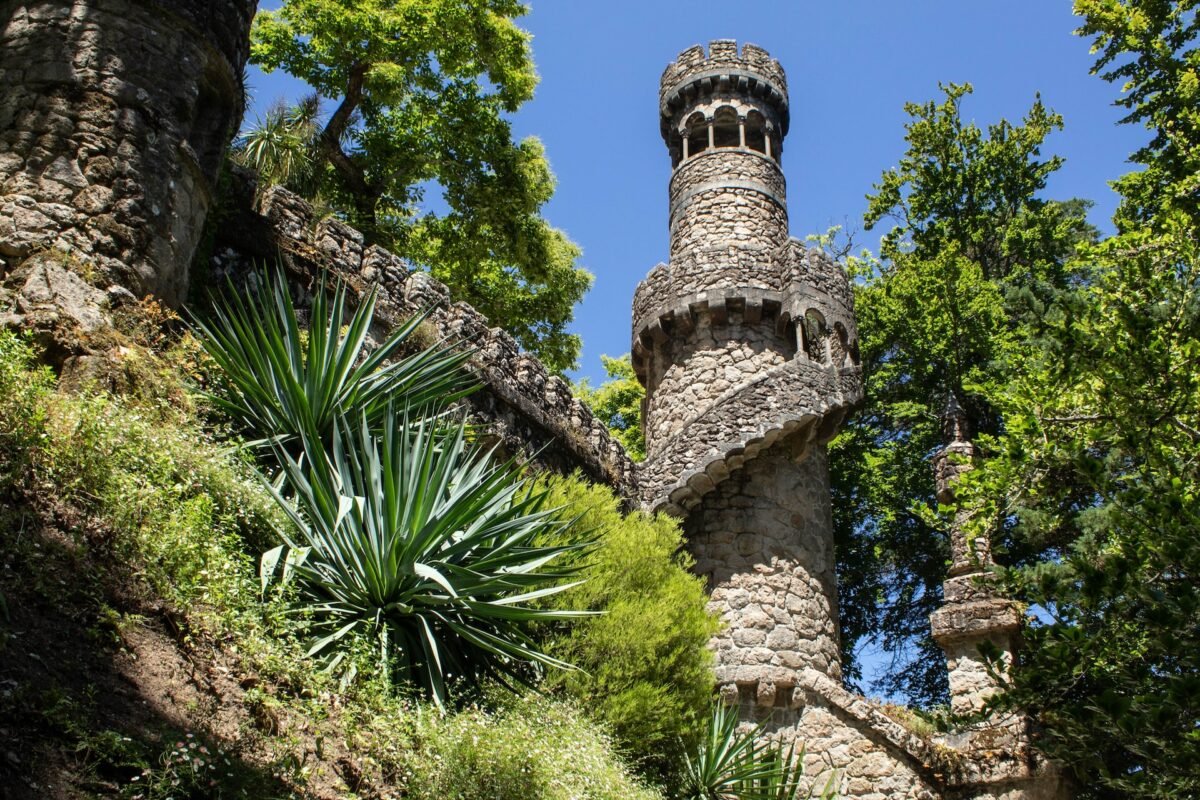
Travel time from Lisbon to Sintra: 40 minutes, by train
Just a short train ride from Lisbon, Sintra is a beautiful UNESCO World Heritage site with stunning castles and a rich history. Get to Sintra as early as you can to begin exploring before other daytrippers arrive and the sites begin to fill with visitors.
What to do and see in Sintra:
For easy access to the castles in Sintra, you can book a castle tour. If you’d rather explore on your own, make sure to visit Pena Palace, Castelo dos Mouros, and Quinta da Regaleira. Start with Pena Palace first because it’s the most popular and gets crowded quickly. If you have the time, Monserrate and Sintra National Palace are also worth a visit. Even if you can’t see every single site in one day, you’ll enjoy exploring this charming fairytale-esque town.
What to eat in Sintra:
Sintra has an abundance of cute cafes to visit. Try out Saudade, Parreirinha de Alfama, or Casa do Preto. Stop by Casa Piriquita to enjoy the famous travesseiros, a treat made with puff pastry and almond cream filling. During lunch, get a seat at one of the outdoor cafes to enjoy the atmosphere.
Day 9: Day trip to Obidos
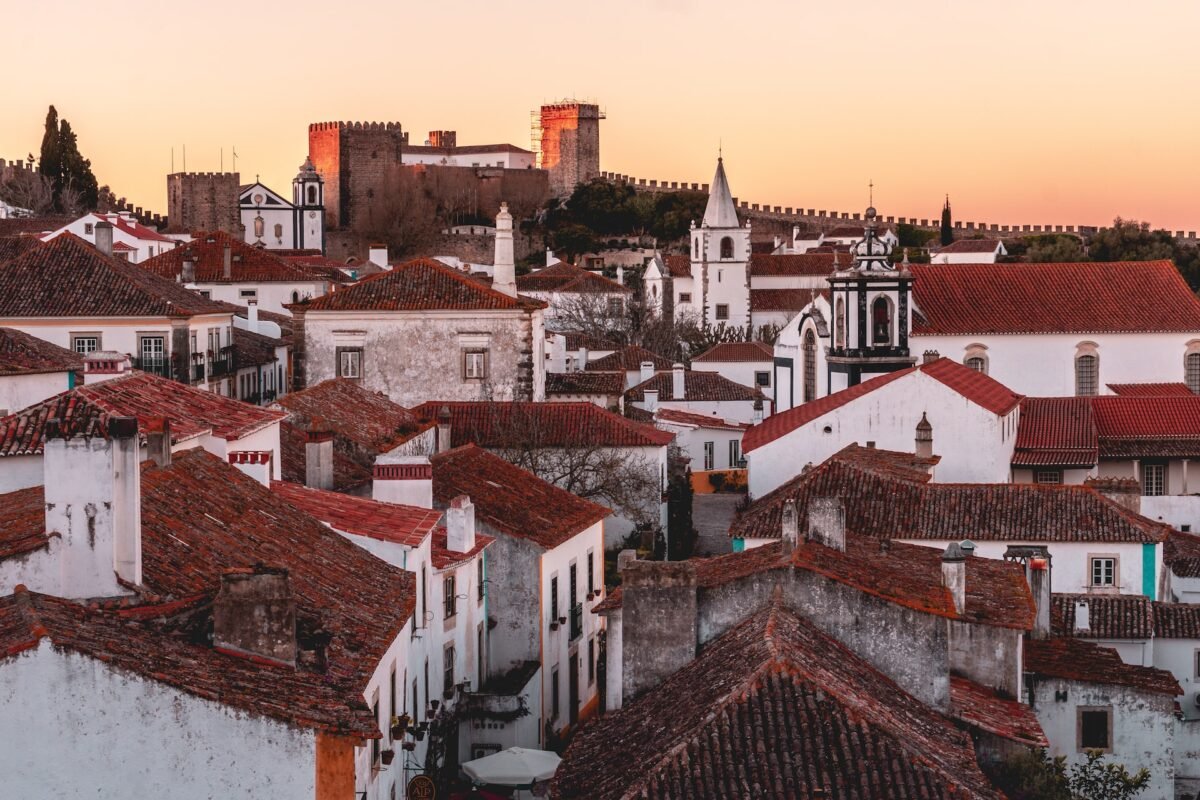
Travel time from Lisbon to Obidos: 1.5 hours, by bus
Obidos is a charming little village that is a complete change of pace from the city life in Lisbon. The medieval walled city is a UNESCO World Heritage site. It’s an especially delightful town for literature lovers thanks to its many bookstores.
What to do and see in Obidos:
The main attraction in Obidos is its well-maintained medieval wall. You can walk along the castle wall and enjoy the picturesque view over the village. The town is small enough that it’s easy to walk around and explore as much as you want.
Be sure to visit the Igreja de São João Baptista and the peaceful cemetery just behind the church. Rua Direita is the main street filled with souvenir shops, bars, and cafes. There are also 14 bookstores you can visit. One of the most interesting is the Mercado Biológico de Óbidos, an organic market with more books than groceries.
What to eat in Obidos:
For a special occasion try a medieval meal that more regal than cheesy at the Pousada de Obidos. For a less formal dinner, try Alcaide and enjoy a view of the village from the rustic tavern’s terrace.
Day 10: Arrive and explore Lagos Old Town

Travel time from Lisbon to Lagos: 3.5 hours by train
One of Portugal’s best seaside destinations, Lagos is the perfect place to enjoy views from dramatic cliffs, explore hidden grottos, walk through the old town, and lounge on golden beaches.
What to do and see in Lagos:
Travel from Lisbon to Lagos takes a good portion of the day, so the best thing to do with the rest of the day is to explore the heart of Lagos. Spend time looking at the walks that surround the Old Town, walk through the Parque da Cidade de Lagos, and enjoy the street art and murals in the area. You’ll also be able to find local souvenirs like pottery, paintings, and other handmade items.
What to eat in Lagos:
If you arrive before 2 pm Monday through Saturday, check out the local market, Mercado Municipal de Lagos. You’ll be able to pick up items like fresh seafood, fruits, vegetables, and dairy. For coffee and a quick bite, stop by The Coffee Studio. If you’d like to enjoy your meal outside, try out the terrace at the Garden Restaurant.
Where to stay in Lagos:
$ – Olive Hostel Lagos
$$ – Old School Guest House
$$$ – Green Door
Day 11: Lagos Boat Tour
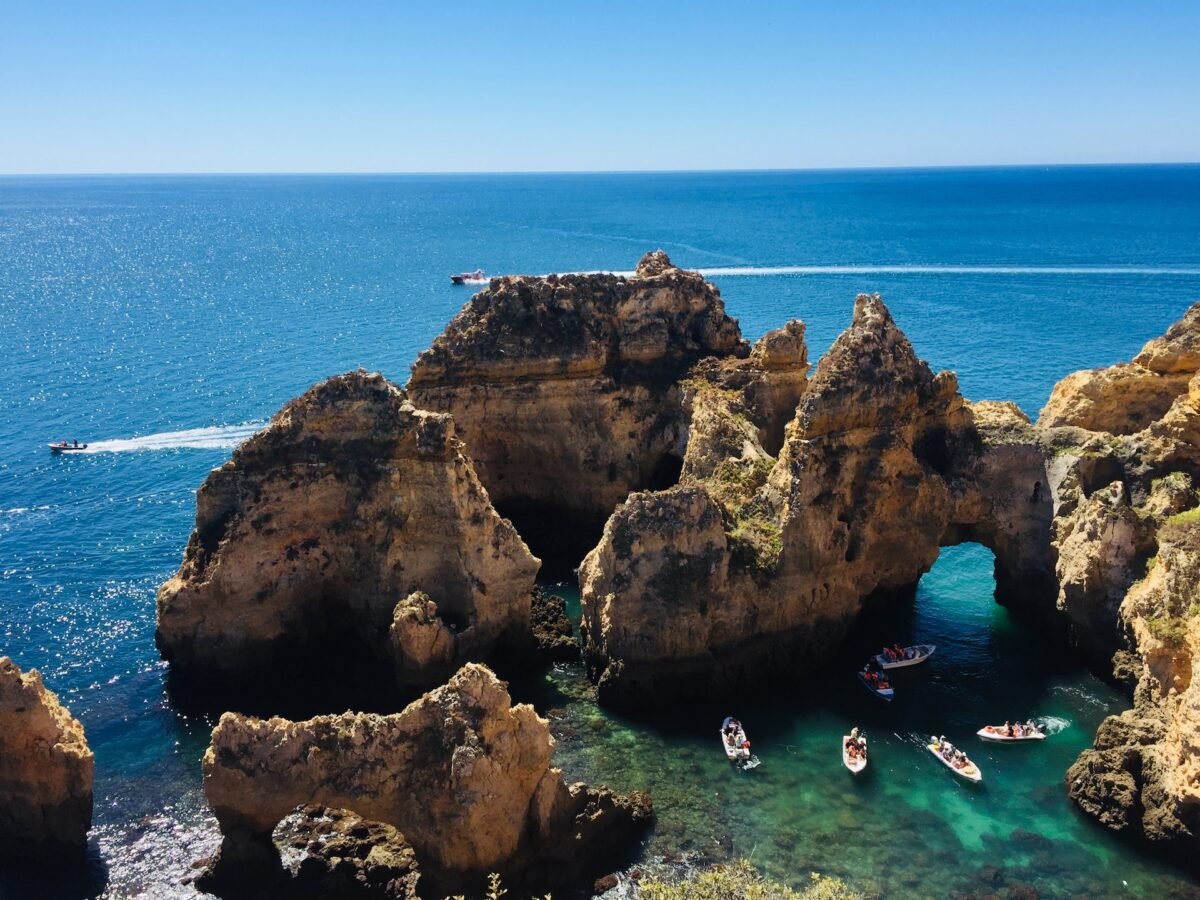
You can’t visit Lagos without seeing some of the grottos and caves along the Algarve coastline. The easiest way to see these beautiful spots is through a boat tour departing from Lagos. There are all kinds of guided options including kayaking or paddle boarding. The Benagil Caves are the most popular caves, but they are not accessible when the waves are too strong. If the weather is rough during your trip, you can still visit some of the grottos and caves closer to the shore instead.
While you can view the Ponta da Piedade by sea, it’s also possible to view them by land. Once your boat tour has ended, you can hike along the Ponta da Piedade boardwalk to get beautiful views of the rock structures and the surrounding area. The Ponta da Piedade headland is one of the best places in the area to see the sunset as it drops behind the cliffs.
Day 12: Lagos Beaches
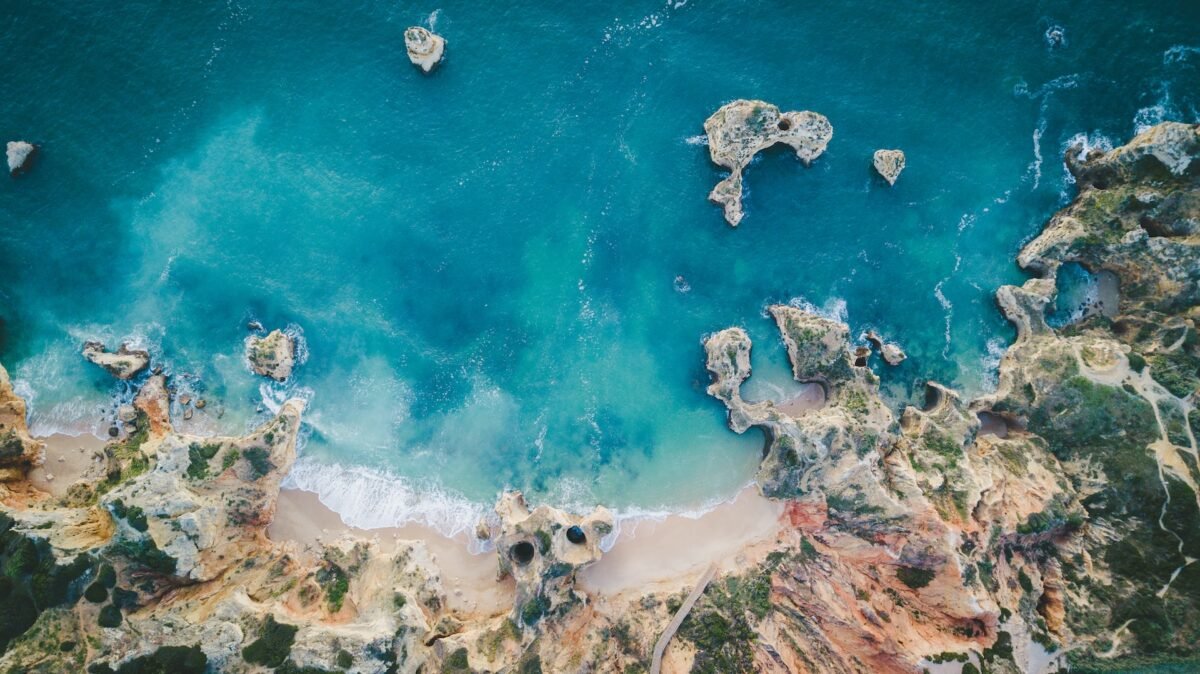
With golden sand, clear water, and dramatic rock formations, Lagos’ beaches are both beautiful and popular. You could easily spend days sitting beachside while visiting.
Beaches to visit:
Praia do Camilo is one of the most beautiful beaches in Lagos. Thanks to the rocky cliff nearby, the area feels like a private, secluded beach. Praia de Dona Ana is the most popular beach in the area. While it is very beautiful, the beach gets busy quickly. For fewer crowds, try out Praia do Pinhão. This beach is a bit smaller than Praia de Dona Ana, but it is quieter and equally as picturesque.
No matter which beach (or beaches) you choose to visit, make sure you bring your own drinks and snacks because you won’t find food vendors or restaurants near many of the beaches in Lagos. You’ll also want to bring sunscreen so you can spend as long as possible walking along the sand and dipping your feet into the stunning turquoise water without worrying about getting burned in the sun.
Day 13: Explore Faro

Travel time from Lagos to Faro: 1 hour 45 minutes, by train
Portugal’s southernmost city on the mainland, Faro is a cute little town with a relaxed atmosphere. Enjoying the slow-paced culture in this walkable city is the perfect way to spend your last couple of days in Portugal.
What to do and see in Faro:
Visit the impressive Faro Cathedral and take in the view over the city from the clock tower. Visit the Museu Arqueologico where you can see a variety of artifacts and objects related to Faro’s history. Stop by Igreja do Carmo, a classic Portuguese church with Baroque architecture. If you’re up for it, check out the bone church housed in the chapel behind the beautiful 18th-century church.
In the evening, you can enjoy the nightlife on Rua Conselheiro Bivar. This street has a variety of cafes and bars that fill up with people, especially on the weekends. At certain times, you find live music here.
What to eat in Faro:
For the best pastel natas in Faro, try out O Seu Café. To try out the classic Portuguese “rusk,” head to Maktostas. In the evening, grab drinks at O Castelo where you can enjoy the view right on the seafront.
Where to stay in Faro:
$$ – Faro Boutique Hotel
$$$ – Hotel Faro & Beach Club
Day 14: Explore the Ria Formosa and Depart
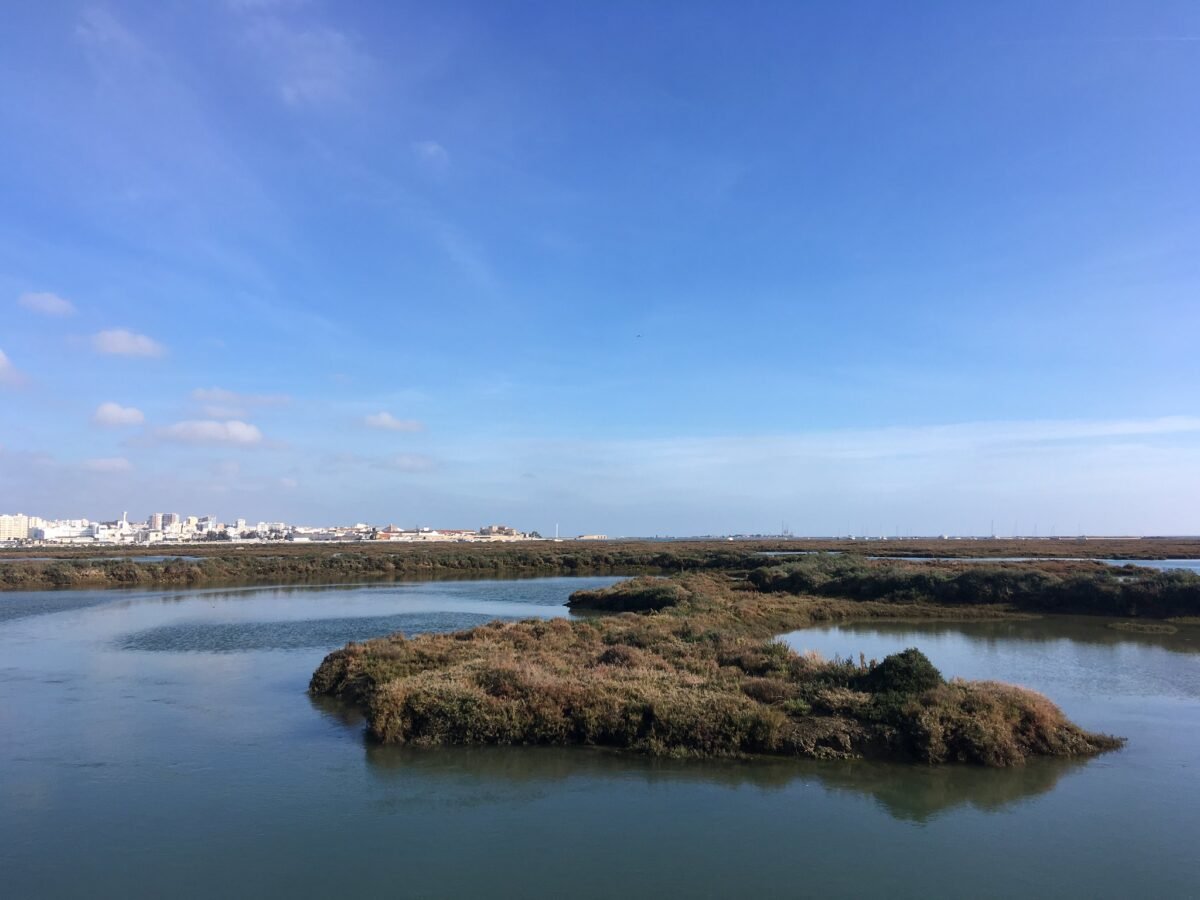
The Ria Formosa is a coastal lagoon made up of inlets, islands, and channels along the eastern Algarve. The area has been named one of the seven natural wonders of Portugal. The natural lagoon is home to a variety of wildlife, including flamingos, several duck species, and everything from foxes to frogs and newts. Hundreds of bird species make their way through the park while migrating during the spring and autumn.
You can either take a boat tour of the lagoon in the morning to visit the channels and islands or you can hike the Ludo Trail. The hike takes around 3-4 hours to complete while different boat tours take different amounts of time. Both of these options are accessible from Faro.
Depending on when your flight departs, you can adjust how long you spend exploring the Ria Formosa. Gago Coutinho Airport (FAO) two miles west of Faro is an international airport where many different airlines operate with direct passenger flights to a number of other locations in Europe.
Final Thoughts
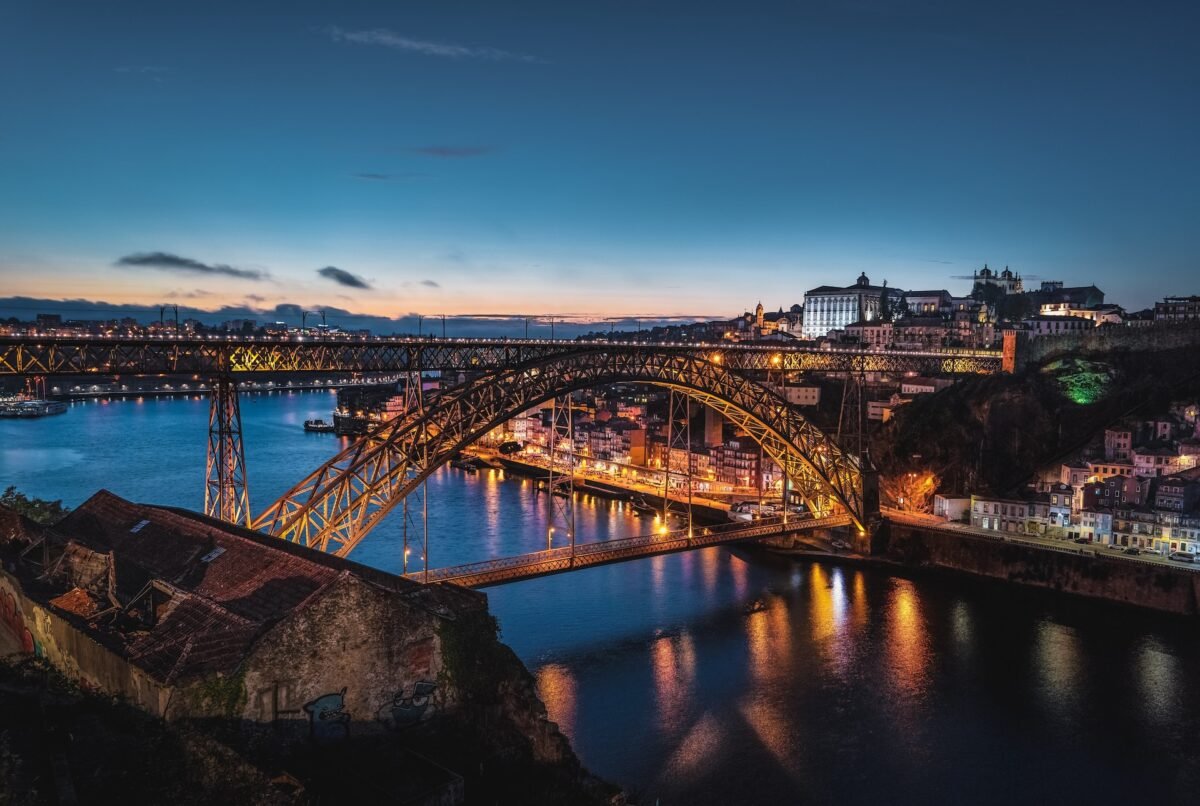
Hopefully, you have a good idea of what to do during your adventure in Portugal. If you’re looking for more itineraries for other European destinations, check out our guides to 14 Days in Spain, 9 Days in Switzerland, or 48 Hours in Athens.







